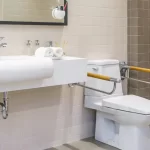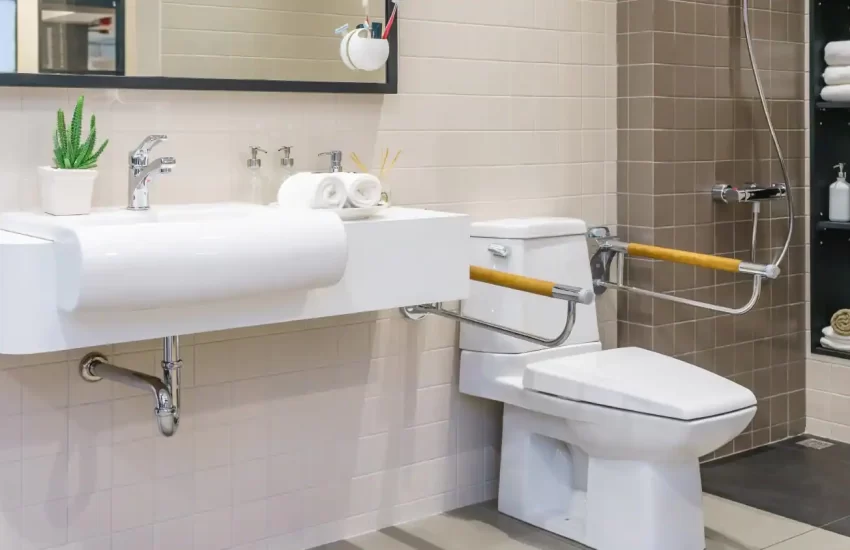An extractor fan for your bathroom might not be high on your wishlist, but its functionality should not be overlooked. With multiple models available and flexible payment plans to meet individual needs, there are now plenty of choices that should meet all requirements.
From basic models to app-controlled options, there are countless fans available – this guide can help you select the ideal fan for your home.
Size
Your choice of bathroom extractor fan depends on your home’s ventilation standards and how often your shower is used. In addition, it is important to take moisture levels and heat recovery options into consideration when making this choice.
Noise level of fan is also crucial – no one wants to be startled awake by something that sounds like an aircraft engine mounted in their wall! Noise levels are measured in decibels; for a quiet fan it would be best to opt for either an axial or centrifugal fan with lower decibel readings.
Xpelair’s XID100 100mm centrifugal metal inline duct fan is an excellent example of a silent bathroom extractor fan that won’t disappoint. When choosing your fan, ensure it has an appropriate CFM (measures air movement per minute). This will allow you to select one suitable for your room.
Design
An extractor fan for bathrooms is an air ventilation system designed to eliminate humidity and moisture from the air, helping prevent condensation and damp that leads to mould and mildew growth. Furthermore, they reduce leak risks which could potentially damage ceilings and require costly repairs.
Many of the fans on offer meet Building Regulations requirements for different sizes and types of rooms, and can be mounted either on walls or ceilings, complete with humidity sensors and movement detectors to maintain ideal airflow conditions.
An inline extractor fan offers longer duct runs and may be ideal for larger bathrooms or new builds without windows; they are often cheaper and more energy efficient than standard mains voltage fans.
Noise
Modern extractor fans are designed to run quietly and with efficient motors that reduce noise. If your extractor fan is noisy, it may simply need cleaning; remove the vent cover and vacuum any build-up of dirt that has collected on its blades. A dirty fan causes more energy usage which leads to increased noise output from its motor; having one that is dirty also increases energy use, increasing noise generation even further and could indicate damage or wear that could require expensive repairs to restore.
A quiet fan can prevent condensation build-up that leads to damp and mould, which in turn can lead to expensive repairs and replastering costs, health problems like rashes and asthma symptoms, wooden structure decay and peeling wallpaper rot – and therefore keep drier air flowing through your property. Installing the appropriate bathroom extractor fan will help prevent these problems by providing dry air circulation throughout your property.
Energy efficiency
Modern fans are energy efficient and designed to meet building regulations; offering ventilation of up to 15l/s (54m3/hr). Furthermore, they help prevent damp, mildew and mould growth that could otherwise accumulate in bathrooms without proper airflow management.
Fans can be controlled manually, linked to your light switch or fitted with humidity sensors that activate when moisture levels exceed a set level. They’re suitable for wall or ceiling mounting and some even fit seamlessly into windows – just consult a glazier beforehand if doing this!
Venting extractor fans directly outside the bathroom will ensure optimal performance and reduce potential health hazards from venting in other parts of the house, such as loft spaces. Ventilators that vent into loft spaces could merely move problems elsewhere. For best results, vent them outside directly.
Installation
Many fans offer you the ability to easily wire them into your bathroom lighting circuit or remote switch, with some offering extra features such as timers and humidity sensors for optimal control. This gives you flexibility when it comes to selecting which fan will best meet your home environment.
Extractor fans are an effective way of dealing with excess moisture in the home. Condensation can lead to mould and mildew growth on walls and surfaces if left unchecked, while extractor fans help combat this by keeping air moving around, keeping rooms dry, reducing odours, protecting surfaces and furnishings and keeping air flowing around – keeping odours down while simultaneously drying the room out!
Houses with frequent smokers may benefit from installing fans to reduce build-up of tar on windows and furniture, helping prevent it from depositing onto furniture and windows. Fans can be mounted either at ceiling level or soffit level.


 Customizable Bathroom Fixtures – Tailoring Your Space
Customizable Bathroom Fixtures – Tailoring Your Space  5 Easy Ways to Incorporate Artistic Elements in Your Kitchen
5 Easy Ways to Incorporate Artistic Elements in Your Kitchen  Smart Budgeting for Your Home Improvement Projects
Smart Budgeting for Your Home Improvement Projects  The Role of Glass Repair and Replacement in Preserving Architectural Integrity
The Role of Glass Repair and Replacement in Preserving Architectural Integrity  Accessible Bathroom Design – Making Bathrooms Safe and Comfortable for Everyone
Accessible Bathroom Design – Making Bathrooms Safe and Comfortable for Everyone  Manchester Kitchen Fitters Unveiled: How to Make the Right Choice
Manchester Kitchen Fitters Unveiled: How to Make the Right Choice  Bathroom Tiles Are Practical, Easy to Clean and Highly Customizable
Bathroom Tiles Are Practical, Easy to Clean and Highly Customizable 
